STEM Summit XXI
 In late August, I had the opportunity to join 70 people who had gathered at SEDL to establish the STEM XXI (for In late August, I had the opportunity to join 70 people who had gathered at SEDL to establish the STEM XXI (for 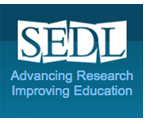 21st century) Network with the goal of developing partnerships and strategies to improve STEM teaching,learning, and life experiences for Texas students. In addition to SEDL, the summit was co-hosted by IBM, The Thinkery, and Central Texas Discover Engineering. The participants came from foundations, government agencies, industry, museums, non-profits, professional development providers, school districts, universities, and youth development programs. 21st century) Network with the goal of developing partnerships and strategies to improve STEM teaching,learning, and life experiences for Texas students. In addition to SEDL, the summit was co-hosted by IBM, The Thinkery, and Central Texas Discover Engineering. The participants came from foundations, government agencies, industry, museums, non-profits, professional development providers, school districts, universities, and youth development programs.
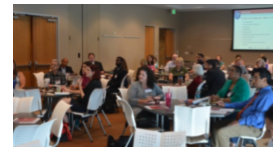 The meeting was kicked off by Wes Hoover, SEDL President and CEO. Vicki Dimock, SEDL Chief Program Officer discussed the goals of the meeting and future direction. A panel led by Katie Kizziar, The Thinkery’s Associate Director of Programs, included Stacy Avery from the TEA T-STEM Initiative, Tamara Hudgins Executive Director of GirlStart, Melanie Moore, Executive Director of the KDK Harman Foundation, and Karen Siles from IBM. The panel produced a lively discussion of the T-STEM Design Blueprint, the importance of mentoring, evaluation frameworks, and the critical element of parents in moving STEM education forward with students. The meeting was kicked off by Wes Hoover, SEDL President and CEO. Vicki Dimock, SEDL Chief Program Officer discussed the goals of the meeting and future direction. A panel led by Katie Kizziar, The Thinkery’s Associate Director of Programs, included Stacy Avery from the TEA T-STEM Initiative, Tamara Hudgins Executive Director of GirlStart, Melanie Moore, Executive Director of the KDK Harman Foundation, and Karen Siles from IBM. The panel produced a lively discussion of the T-STEM Design Blueprint, the importance of mentoring, evaluation frameworks, and the critical element of parents in moving STEM education forward with students.
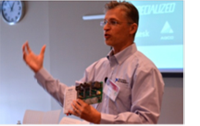 The keynote speaker was Dave Wilson, National Instruments Director of Academic Programs. Dave stressed the importance of hands-on experience to see the equations at work and provided several examples of devices to simulate the real world applications. The keynote speaker was Dave Wilson, National Instruments Director of Academic Programs. Dave stressed the importance of hands-on experience to see the equations at work and provided several examples of devices to simulate the real world applications.
The first challenge for the participants was to develop definitions of STEM. Here are a few of the results:
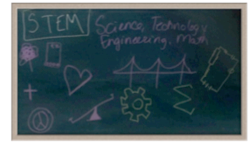 STEM (education) is a multidisciplinary approach for problem solving and understanding the world around us through engagement and hands-on collaboration. STEM (education) is a multidisciplinary approach for problem solving and understanding the world around us through engagement and hands-on collaboration.- STEM is an integrated, experiential approach creating innovative, intellectual exploration to foster an economically and socially equitable global community.
- Life learning through the holistic exploration of STEM that is currently applied and provides for the future.
- STEM is an education initiative that integrates the fields of Science, Technology, Engineering, and Mathematics in an inquiry-based environment that prepares students with the skills necessary to be successful, analytical problem solvers of tomorrow.
- A student-centered, interdisciplinary approach using engaging instructional methodologies aimed at encouraging creative and innovative ways to solve real-world problems while applying what has been learned.
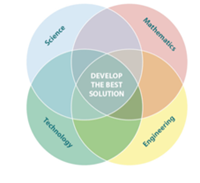 SEDL’s Haidee Williams summarized the overall definitions as “STEM is a meta-discipline that combines Science, Technology, Engineering, and Math within classrooms that are inquiry-based, problem-solving, discovery zones engaged with content to find the best solution to problems.” SEDL’s Haidee Williams summarized the overall definitions as “STEM is a meta-discipline that combines Science, Technology, Engineering, and Math within classrooms that are inquiry-based, problem-solving, discovery zones engaged with content to find the best solution to problems.”
The group then broke intro pre-assigned discussion groups designed to include individuals with a broad range of different experiences to address three key questions. When the group reassembled, common themes across the teams were discussed.
If we can only meet the challenge of developing sufficient STEM talent for the 21st century through partnership as opposed to individual action, what are the actions that we must do together?
 Collaborate across the entire ecosystem Collaborate across the entire ecosystem- Create something and learn as you’re creating it
- Identify gaps and go outside to find missing pieces
- Accept that one size does not fit all
What do I need from others, both inside and outside my organization, to make any partnership successful?
- A shared, common vision
- Expertise to complement what my organization has
- Clear communication among all stakeholders
- Tools that have proven to be successful
What do I, or my organization, uniquely bring to any partnership that will help meet the needs of others in order to make the efforts successful?
- A willingness to share my experience, expertise, and data
- Test beds for new ideas and approaches
- An infrastructure to be used or replicated
- Emissaries to spread the word
This brief summary does not convey the full depth of the discussion and conclusions but additional information will be available through the STEM XXI web site.
Melissa Dodson, SEDL Director of Evaluation, concluded the summit with recommendations for next steps:
- Develop a common system of quality standards, outcomes measurement, and evaluation systems
- Identify and describe STEM programs that are available in Texas
- Identify the gaps in services
- Collaborate to address STEM learning opportunities in informal and out-of-school STEM programs
- Identify funding sources.
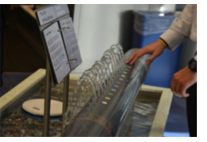 After a day of hard work it was time to play! The Thinkery hosted a private tour of their facility which recently celebrated its first anniversary. My favorite activity was Currents which features watery science. Rain gear is provided for those who wish to remain dry, but where’s the fun in that? After a day of hard work it was time to play! The Thinkery hosted a private tour of their facility which recently celebrated its first anniversary. My favorite activity was Currents which features watery science. Rain gear is provided for those who wish to remain dry, but where’s the fun in that?
Please check out the Twitter hashtag #STEMXXI for more information about the summit and follow @STEMXXI for on-going discussions. The SEDL web site will be updated with further information about the summit and follow-on actions.
On a separate note, registration for SXSWedu has opened. Weather in Austin in March should be great. Maybe I’ll see you there.
I’ll be back again next month. In the meantime, you can follow me on Twitter or read my sometimes updated blog.
The graphics are the property of SEDL and used with their permission. Photos were provided by Danny Martinez, SEDL.
Rick McMaster retired from IBM as the STEM Advocate in December 2013, but continues his work in “STEM and more” through occasional tweets and blogging, continuing to serve on various technical boards, and chairing the Central Texas Discover Engineering outreach. You can reach him at drrhmcm@gmail.com, for continuing discussion. He believes that you can’t start too early to form the “T”.
Back to newsletter |